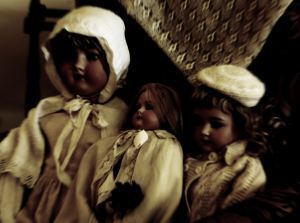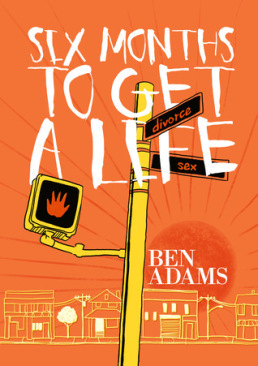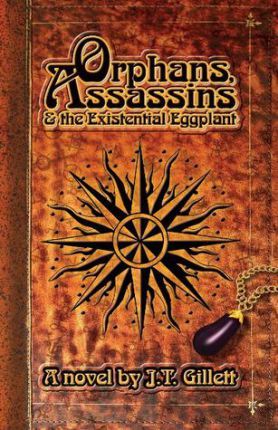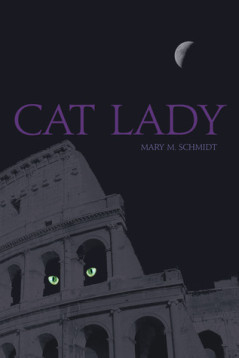Ingrid Hall's Blog, page 6
November 5, 2015
Review of No Quarter: Dominium by MJL Evans and GM O’Connor
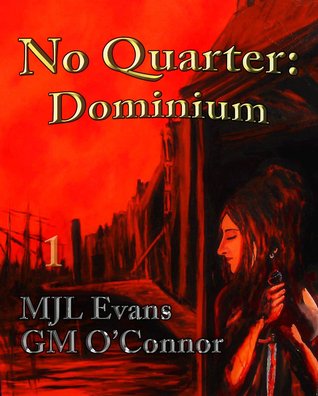
Avast, mateys! We’re taking a short stroll through seventeenth century Port Royal in the Caribbean, where pirates and slave traders still hold sway. Batten down the hatches for a turbulent voyage!
In this first installment of a multi-novella series, we follow Atria — a fiery red-haired Irish woman — as she is shipwrecked with her sister in the swashbuckling coastal town of Port Royal.
Her troubles only increase as she is captured by ill-bred white slavers. Then, to really top things off, she’s offered as a prize in a card game. But wait — the book’s unlikely hero Gator Gar appears in the nick of time, and a romance is begun.
Along the way, the novella is strewn with many memorable characters, like Dr. Sander Strangeways, who brings a modicum of comic relief. In one passage, his nurse berates him for giving away the last of the laudanum.
“The doctor flushed. ‘Another fisherman lost an eye. I had to give him something. Besides, I didn’t know a hurricane was coming. Hurricane prediction is not listed on the sign.'”
And, then, there’s Judge Harold Goblet, who was “no more than four and a half feet tall, terribly stout, with a round head and big lips that gave the impression that he was perpetually pouting.”
Other minor characters abound in this richly drawn depiction of daily life in circa-1689 Port Royal, and the author describes both characters and surroundings with practiced ease. Indeed, at times it reads much more like a historical treatise than an action romance, one of the few failings I found with the book.
On the whole, No Quarter Dominium is a fine effort that just needs a little editing to clear up the often jagged continuity and the anachronistic language (some of the dialogue doesn’t ring true for the period).
I give the novella four stars and applaud the ambitious efforts of the two co-authors.


November 1, 2015
Developing Minds by Jonathan LaPoma
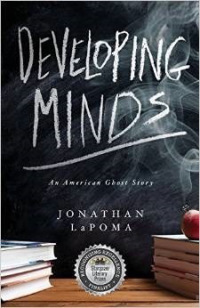 Developing Minds by Jonathan LaPoma
Developing Minds by Jonathan LaPoma
In Developing Minds, author Jonathan LaPoma details the sordid, real-life underbelly of the American urban education system today. And it’s a picture straight off Picasso’s Cubism palette — all jagged edges and outsized caricatures that are, unfortunately, reality for U.S. classroom teachers today.
Luke Entelechy has just arrived in Miami with his friend Billy on a whim. They have both suddenly decided that teaching in New York was not the right fit for them, so they have motored on down to the south of Florida seeking a fresh start.
What Entelechy gets instead is a brisk slap in the face and a swift kick in the ass at the hands of the unforgiving students at George Washington Middle School. The only thing they seem to have a lower esteem of than themselves is the unfortunate Mr. Entelechy, who struggles period after period just to impart some basic knowledge of U.S. history.
What he does instead all day is referee classroom fistfights and endure endless profanity and disrespect.
“Chante got up and stormed over to (Frantz), pushing desks aside on her way. She threw a punch and Frantz dodged it. Then he grabbed a handful of her hair and wouldn’t let go. I ran out into the hall and looked for the security guards. I saw them standing at the end of the hall, crowded around one of the more attractive and well-endowed eighth grade girls. They were smiling like a group of old perverts.”
This is the story of how Luke fights back, bucking the overwhelming odds and the stifling pressure of the “teach-to-standardized-testing” mentality that is currently handcuffing beleaguered teachers nationwide.
There’s plenty of action outside school walls here, too. Luke and his friend Billy party up and down South Beach most nights along with an ensemble cast of memorable characters. One is a fellow teacher who gives Luke some sage advice:
‘You can’t argue with these kids. They’re pros at roping people in. They’re going to test you in every way possible, and you just gotta show them you won’t take their shit.”
This book is much more than a raw indictment of America’s school systems, of course. The protagonist is trying desperately to come to grips with his own demons — and not succeeding very well. His book project, like his proposed screenplay, is stillborn and his job as a teacher saps the creative energy from him at every turn, so the narrative often revolves around Luke’s inability to perform on many levels.
A satisfying ending resolves many issues large and small, however. I won’t spoil it, but suffice to say that Luke finally achieves equilibrium in his imperfect world and vows to start the new school year fresh with an enlightened attitude.
Developing Minds deserves five stars as a gritty, character-driven, coming-of-age novel by a talented writer.


October 30, 2015
A little something for Halloween: Last (Dolls) House on the left
I haven’t had time to run a specific Halloween post, so I am sharing Lenora’s INCREDIBLE Haunted Doll’s House post. Have a spooktacular Halloween people!
 Originally posted on The Haunted Palace:
Originally posted on The Haunted Palace:
As I won’t be in reach of the internet on the night itself – here is my slightly early offering for Halloween. Enjoy…
 ‘Strawberry Hill Gothic’ style dolls house. Image adapted by Lenora.
‘Strawberry Hill Gothic’ style dolls house. Image adapted by Lenora.
There has always been something innately creepy about the trappings of childhood – from cursed dolls to self-propelling rocking horses – the contents of the nursery has more often than not been the stuff of nightmare and horror. Perhaps it is the ease with which such objects of innocence can transform themselves, with only a change in the quality of light or a sense of unobserved movement, into the uncanny or sinister.
Dolls houses have always held a particular fascination for me, perhaps it is because peering in at the windows of the world in miniature, you cannot help but imagine what dreadful stories might be unfolding behind the twee facade. I have to…
View original 1,862 more words


October 29, 2015
Review of Six Months To Get A Life By Ben Adams
Six Months To Get A Life By Ben Adams
Reviewed by Carlton Rolle
Ben Adams went to grade-school, then college, and eventually grew up. With that, he got a responsible job, house, and a family. As time went on he had a mid-life crisis. Thinking that life was becoming too serious, Ben took up writing. First he wrote for his kids, but eventually began writing for adults. He writes for people who have lived, loved, worked, strived and suffered – people like himself. He finds humor where others just find pain. Currently Ben lives in London with his two boys, his dog, and constant stream of girlfriends.
The story follows Graham, a 42 year old recent divorcee. After 15 years married, two sons, and a dog, the couple decides to call it quits on their relationship. Graham leaves out of the family home and moves in with his parents. In a moment of reflection, Graham points at places where he has went wrong in life. He decides to get his life in order before his 43rd birthday.
One of the first goals that Graham had was to move into a place by himself. Living with parents at any time can be challenging. Graham sought to find a flat that worked with his son’s routine and places he wanted to be around. Throughout the entire book, Graham is most concerned with his sons Jack and Sean. Graham always did plenty of things with his sons, so he thought continuously of ways to interact with the boys.
Another area that Graham wanted to work on was his love life. He starts by meeting up with his buddies in neighborhood pubs. Though they don’t really help much in his troubles, they give him an outlet to relax with. Graham also attends several dinner dates with couples that he knew mutually with his ex-wife. Though somewhat successful, Graham meets a woman named Julia. After she makes a move on him, they have a one night stand.
While working towards a different quest towards is getting in shape, Graham takes his dog Albus on a walk. During one of their walks, he meets Amy. Amy is recently divorced herself. While discovering their interest in one another, they take their time to show their emotions. Both interactions with women after Graham’s marriage helped him gain better perspective of who he was and what he wanted from life.
Graham also decides that he needs to change his boring desk job. As a sign itself, his company undergoes restructuring and he finds out he will be stacked. He puts greater energy into refreshing his resume and applying to jobs. Eventually he secures a job that easily replaces his former company.
In the book Graham informs readers through diary format. It gave readers a clear perspective to be able to connect with and understand why people do certain things. In Graham’s case, he learns the depth of companionship and love. He reconnects with living for a brighter future for his sons and sharpens his self-confidence. Ultimately Graham sought and claimed a portion of his worth in life after a divorce.
For more information about Ben Adams, visit http://blog.benadamsauthor.com.
October 28, 2015
Orphans, Assassins and the Existential Eggplant by J.T. Gillett
Orphans, Assassins and the Existential Eggplant by J.T. Gillett
J.T. Gillett holds degrees in philosophy and journalism from the University of Oregon and studied at Naropa Institute’s Jack Kerouac School of Disembodied Poetics. His accomplishments include meditating with Allen Ginsberg, chanting inside the Great Pyramid, climbing Mt. Shasta, marrying the woman of his dreams and raising two children who turned into amazing adults.
In Orphans, Assassins, and the Existential Eggplant, you get a sense very quickly that this will be an extraordinary book.
Besides the whole concept of a talking eggplant (I’m not kidding), there are the wonderful descriptive passage spread liberally throughout the book:
“If Hamdan could read the buxom clouds scattered above the horizon, or the delirious zebra fish swimming below, he’d know he’d be dead before the sun would rise again.”
So goes one of the many fables touched on in this epic ride through the author’s imagination. And, while we are mere readers along for the ride, we are nevertheless transported along with him across sand dunes and through castles, always with an upbeat, quirky bent that defies any kind of generalization.
We follow the protagonist, Aaron Sloopshire, as he encounters a menage of unique and memorable characters in a variety of scenarios, many that leave you weak from laughter — especially at the sarcastic wit of the loquacious eggplant.
At one point, they come upon a strange and lonely woman in the Egyptian desert:
“She had become accustomed to the voices of the wind and sand, and was enraptured by the blood-and-bones in their voices. For the first time in quite awhile, she was certain she was alive. . . . (the woman) looked like a ghost with a suntan.”
In another instance, Aaron has been kidnapped by a nefarious old man named Hassan and forced into service as an assassin. But, before he can carry out his first commission against a knight, he receives a startling revelation: a young woman with whom he had fallen in love early in the book is in the castle with the knight. But she is now a grown woman, and does not remember him at all. She stabs him, but he disarms her quickly and reflects on this unhappy chance encounter:
“While he bandaged his cut, Aaron suddenly saw the world in a brand new light. It was as if someone had sucked the wind out of him and sewed him up so no air and no light could get in. Just darkness.”
What finally happens to Aaron in this unlikely, but well-told tale, I’ll leave you as the reader to discover. At its core, this is a book with many layers — although it is written with a deceptively light touch.
I give it five stars, and offer congratulations to a gifted first-time author.


October 26, 2015
Review of Cat Lady by Mary M. Schmidt
Cat Lady written by Mary M. Schmidt
Reviewed by Carlton Rolle
Mary M. Schmidt was a student in Rome during the ’60s and came to know the many feral cat colonies. She is the author of poetry, prose, and was a member of Poets Against the Iraq War. She resides outside Washington DC with her cat Graycie.
The gattara or cat lady is a part of Roman history. These are people that help feed the population of cats in Roman public spaces. In this story it follows the life of cats within the care of a lady named Maria. A cat named Queen Bast has 3 kittens and is talking to Maria about them. After the kittens have eaten, Maria is telling them a story about the Cardinal Mezzaluna who’s sends the cats food.
By the request from the Mezzaluna, he asks Maria to help him with his dying wish. There was a lady named Anne-Marie that Mezzaluna was in love with. He wished to know if she remembered him after many decades apart. He believed that Maria would be able to find her.
Mezzaluna briefly describes his love with Anne-Marie as, “For though the love we felt ran deep, I had made other vows to keep, which made our love a grievous wrong.” Their relationship felt almost forbidden. There is a sense of priority and love in the form of sacrifice and holding vows.
In an attempt to do so, Maria asks him how to define his love. He states: “To find her, I will need a sense, Of what made your love so intense. If on her heart you left a sign, a pattern of unique design, more lasting then a precious stone, by this your Anne-Marie is known.” Maria uses this energy pattern to find Anne-Marie by way of Astral projection and aura reading.


October 24, 2015
Review of American Blues by Evan Guilford-Blake
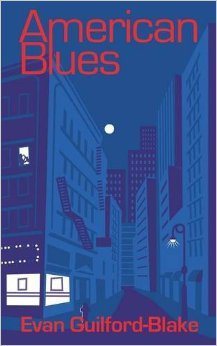 American Blues by Evan Guilford-Blake
American Blues by Evan Guilford-Blake
The sweet sound of a saxophone well-played. New and troubled awakenings in a twenty-six-year old mentally challenged man. A lonely diner in the dead of night. These are just a few of the settings and elements for some fine fiction in this collection of short stories by gifted writer Evan GuIlford Blake.
in the first story, a jazz musician has a stomach cramp, but ignores it until it’s too late. His expert blues licks keep him in solid demand for gigs, though, so maybe everything will turn out all right. Maybe.
“And there it is: a great skein of notes woven into a crazy quilt of such otherwise-inexpressible beauty that it can only exist because he weaves it. It wraps him, and he feels warm within it.”
Many are the lyrical word pictures drawn by the author, and the reader is mesmerized by each short tale.
In Tio’s Blues, a trumpet, a guitar, and a few carefully crafted guilty sex scenes culminate in an ending so unexpected, the reader may be left a bit unsettled. There is, however, another wonderful turn of phrase in the piece:
“Long, legato lines rise from the bell: ‘Smile,’ in a slow, lilting plaint that sounds like all the tears in the world.”
The third story is no less haunting, as an unmarried couple, suffering from the ill effects of an affair that has gone on too long, cross paths with a slightly-built black man who is just getting over a war injury. The scene outside the diner is stark:
“Scrimmed by shadows and the clouds crossing the moon, it resembled a backdrop, not a metropolis; a stage set, not a world. The aura hovered, circling like birds calling their slow and lonely blues in the dark.”
In “Animation,” the title refers to a fifty-three-year old man who was recently laid off, and who now watches cartoons while waiting for his life to move on. He’s just gotten word that his ex-wife is remarrying, but, hey — he’s just been on a job interview, so maybe there’s hope after all.
In the final story, an aging woman rediscovers a love of dancing and her lost youth, while her daughter befriends a drug-using trumpet player. Neither the mother nor the daughter are prepared for the consequences of their actions.
All the stories in American Blues deal with sorrow, pathos and violence. It’s not a book for the faint-hearted. And the dialogue-rich writing sometimes makes you feel as though you’re at the theatre, absorbed in a character-driven play in five parts, each with an underlying blues theme.
On balance, American Blues is an extraordinary piece of writing, though grim at times. I give the collection five stars on the basis of fine writing and compelling characterizations.


October 22, 2015
Shrouded in Blackness by Norma Jeanne Karlsson
Shrouded in Blackness by Norma Jeanne Karlsson
If you like Young Adult Action Romance, have I got the perfect book for you. Shrouded in Blackness is the gritty, yet surprisingly tender love story between Quinn — a former homeless woman, but tough and shrewd as any street fighter — and Kieran — tall, cut like diamonds, and a stone-cold killer to boot.
They meet at a Chicago gym where Quinn is temporarily taking shelter against a bitter citywide snowfall. The encounter is anything but cordial. Quinn stabs him, misinterpreting his initial intentions toward her. And she’s got newly found problems of her own, in the form of six-year-old Jack and three-day-old Ashling, who have been thrust into her care by chance and, perhaps, providence.
It’s hardly an auspicious beginning for a long-term relationship. But, fighting their way through domestic friction, mob hit men and neighborhood toughs, they manage to make their love thrive, often in graphic and steamy sex scenes.
Kieran, though clearly a heavily tattooed, broken-nosed tough guy, nevertheless shows a softer side when Quinn and the kids are around. In one chapter, after being separated for a month, the unlikely “family” comes together once again and Kieran melts:
“They’re here, that’s all that matters,” he thinks to himself as they all snuggle on the same bed. “The three of them fall asleep in minutes and my cold, dead heart beats to life once again.”
The dialogue and writing in this book make it move ahead at the speed of a runaway freight train. And, in moments that could easily become cliche, the author applies a deft hand and either fetches you up against an unexpected plot twist or slides you into the shower with Kieran and Quinn — throwing off enough torrid lovemaking that you’ll find yourself gasping for breath.
The story winds and turns through one harrowing experience after another — sadistic uncles and ill-bred mob minions — before finally resolving in a satisfying conclusion that should please even the most jaded reader.
If this is your first exposure to this particular genre, portions of it will be hard to read at times. Some of the more violent scenes may make you uncomfortable. But through it all you can sense that the author clearly knows her audience — this is Book Three of a series — and she never holds back, delivering an authentic portrayal of a young couple often in conflict, but ever in love.
I give Shrouded in Blackness five stars, based on sheer intensity, dramatic tension and a knock-em-dead writing style.
October 20, 2015
Review of The Silent Years: Mother – by Jennifer R. Povey
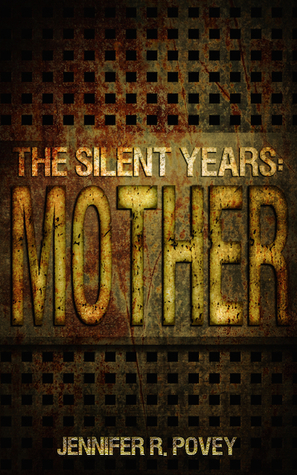
Jennifer R. Povey was born in the city of Robin Hood – Nottingham, England. The daughter of a professional musician, she graduated from the University of York with a degree in Archaeology. Two years later she emigrated to the United States and married her American husband, Gregory. She is now an American citizen.
It could be the end of life as we know it as a deadly virus called The Silence begins sweeping the country. This story moves relentlessly — and chillingly — through a doomsday scenario that’s portrayed stunningly by author Jennifer Povey.
It looks hopeless as Dorothy and her family take refuge on a small survivalist farm her brother owns in central North Carolina. They begin to wonder if they have what it takes to beat the odds and make it through this nightmare. Only ten percent of the population is immune to the virus, but they hope they’ve put enough distance between themselves and those infected to live.
Povey keeps the reader in the palm of her hand as her protagonist Dorothy alternates worrying about her family and taking firm steps to protect them. In a particularly telling moment, she describes the compassion of her eldest son and his fierce need to protect his brother, and how it characterized him:
“(He)was one of the ones who became soldiers and firemen.”
In a grim moment, a stranger, infected with the virus, has approached the compound and tried to gain entrance. He is shot dead. And even though he has degenerated into the zombie state indicative of last-stage victims of the disease, Povey’s description of him is poignant:
“For a long moment, it lay there. It, not he. The face showed no fear, no recognition of death. It was oddly slack, as if even in life it had possessed no animation.”
Things truly go from bad to worse as characters we have become invested in fall victim to The Silence. It seems no one — or nearly no one — is immune to the disease, and some hard choices befall the family as they struggle in this bleak new reality.
This is not your everyday postapocalyptic adventure yarn. It’s a gritty imagining of just how bad things could be if one military biochemical experiment goes awry someday. There will undoubtedly be consequences of the gravest kind. And Povey brings us up close and personal with them.
I won’t give away the ending — suffice to say it’s unexpected and really not an ending in the truest sense as this novella is intended to be the first of three to be written by this talented author.
I did find myself wishing more time had been taken to stretch out suspenseful scenes and instances in which certain characters abruptly disappear in the space of a few paragraphs. But, since the book was intentionally pared down to novella length, perhaps something had to wind up being cut.
Nevertheless, I found the book to be expertly written and well-edited. I look forward to reading the next installment. I give The Silent Years: Mother five stars, and welcome Povey to the ranks of novelist par excellence.
October 17, 2015
Review of The Universes Inside the Lighthouse by Pam Stucky
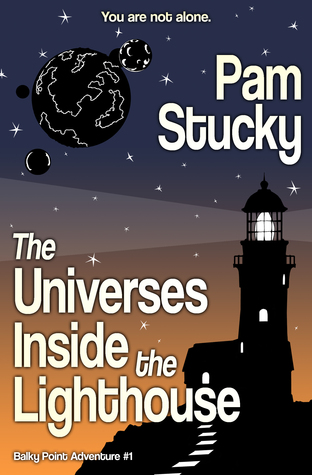
Pam Stucky, a native of the Pacific Northwest, is the author of the Wishing Rock series (novels with recipes), starting with Letters from Wishing Rock, and the Pam on the Map travelogue series, books that take readers along on Pam’s journeys and adventures around the world. The Universes Inside the Lighthouse, Pam’s eighth book, is Pam’s first foray into both YA and sci-fi.
Charlie and Emma are two inquisitive teens who discover a doorway into multiple universes — inside a lighthouse on the small island where they’re vacationing. From there, it’s a short trip into a delightfully drawn tale that leads them to many unlikely places.
Author Pam Stuckey has expertly woven an improbable plotline into a book that is part science fiction, and part Alice In Wonderland. The twins hook up with an ensemble cast of aliens — all of whom look remarkably no different than, say, your next door neighbor — and go in search of a mysterious alien named Nik, who is causing all sorts of intergalactic grief.
Charlie and Emma team up with Emma’s secret heartthrob Ben to quiz a quirky alien scientist named Dr. Waldo, who presents them with an arresting revelation about one of the universes they’ve discovered: the dead don’t ever really depart, as we’ve always thought. Most often, they simply “stick around,” as Dr. Waldo says, or they “move on” — sometimes to inhabit entire worlds just filled with spirits.
Needless to say, this is much more than a simple Young Adult adventure story — although it still somehow manages to accomplish that as well, moving the reader along briskly with snappy dialogue, keen wit, and a surprise around every corner.
The quest turns serious when they become stranded in a strange world with three moons, but their alien-guide Eve finally saves the day by dialing in the correct coordinates for The Hub, where Dr. Waldo is anxiously awaiting their arrival.
But wait! That isn’t Charlie, after all. It’s Parallel Charlie, who switched places with the real Charlie in one of the many alternate Earths. Just kidding, Emma, he says, when his twin sister finds out what they did. Also, Ben has activated a homing beacon on his wrist in hopes of being transported home. Problem is, the device was a beta model and Ben just might have his atoms scattered across the multiverse.
There’s more drama in store as the twins continue their romp around the galaxy before finally accomplishing their task –sort of. It’s a twist ending, and I don’t want to spoil it.
The Universes Inside the Lighthouse is an imaginative read that’s well-written, well-edited and fun to race through, as the twins find themselves in one dilemma after another — but always finding their way out. This book is a YA standout and I give it five stars.


